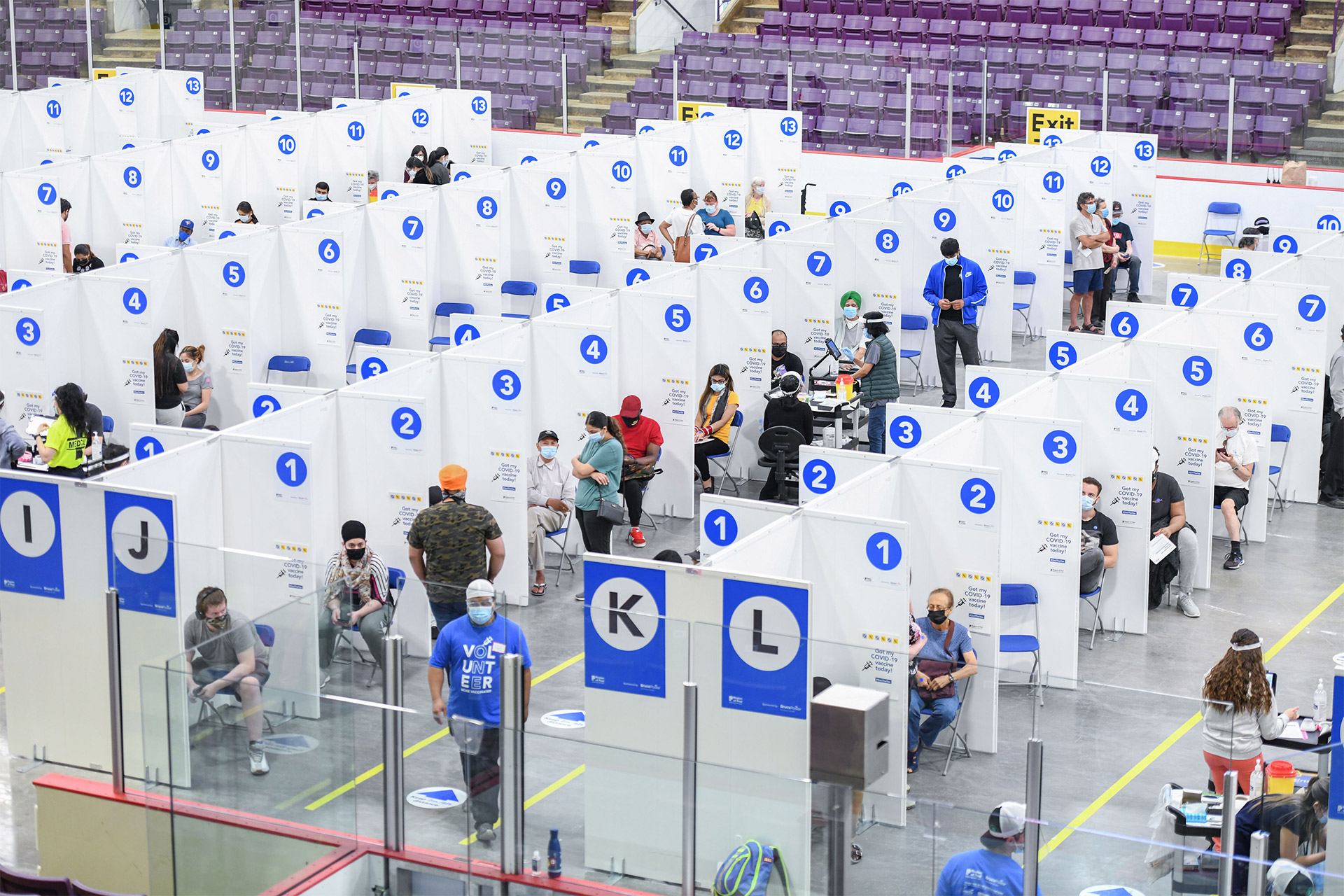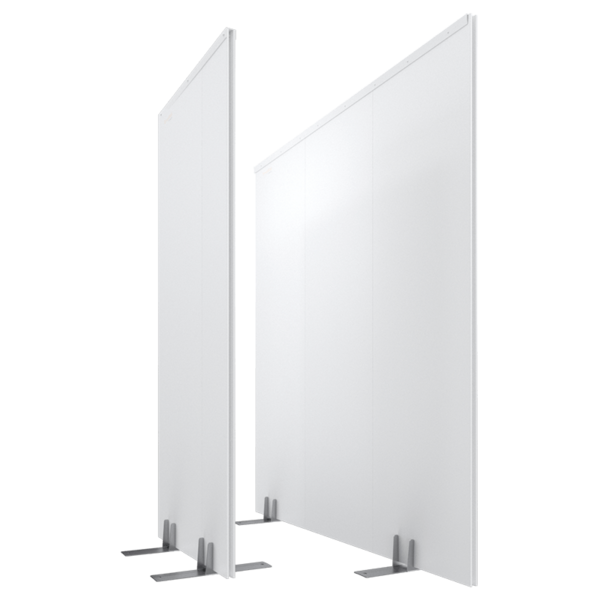Science. Research. Experimentation. Problem solving.
The R&D team at Trusscore is dedicated to enhancing the company’s product line and coming up with solutions to unique production problems and pushing the boundary of what’s possible in the building material field. They’re precisely why the Trusscore moto is: Material Science.
In summary:
- Science and creativity go hand-in-hand. The research and development team at Trusscore pioneered an innovative solution for antimicrobial wall panels
- With some trial and error, some perseverance and some mechanical and chemical expertise, the team created a process to affix an antimicrobial coating to a Trusscore product called TempWall
- TempWall – a modular, movable, temporary wall system, has become an ally for hospitals and vaccination centres alike in the fight against COVID-19
When the pandemic and continent-wide lockdown hit back in March of 2020, Trusscore responded with an entirely new product – TempWall by Trusscore – designed to help hospitals and medical facilities cope with sudden new demands. Potentially infectious people had to be isolated from those who were not and therefore the ability to reconfigure space with temporary walls was an urgent need. TempWall was the answer.
But it wasn’t enough on its own. The Trusscore team decided the panels also needed an extra layer of technology built in to help prevent the disease from spreading, and that required the application of an anti-microbial coating to the panel surfaces. The problem, however, how to do so at scale. And quickly.
The Trusscore research and development team – which at the time was just three members: Ryan Gerakopulos, The Nam Long Doan, and Steve Zsivanov – immediately set to work. They had several problems to solve, including a quick and simple way to apply the coating and then getting the coating to properly adhere to the product surface and remain in place over time, even with repeated cleanings.

“We had many sessions on weekends and evenings, sometimes until three in the morning,” recalls Doan, who specializes in experimental formulations. Doan holds a Ph.D. in chemical engineering from the Tokyo Institute of Technology.
After settling on a popular antimicrobial product that was available and compatible for use with a PVC-based product like TempWall, the team experimented with applying the coating and wiping off the excess material by hand, as the coating manufacturer recommended. But the trio quickly realized doing so would be too labor intensive for the product production team and would slow factory output of the TempWall panels – which medical teams were desperate to have on hand before the COVID-19 virus took hold in earnest.
Next, the team tried running the panels through a bath of the antimicrobial solution, but that, too, proved problematic and didn’t solve the issue of removing excess chemical.
And then, eureka.
“We were searching on the internet, and we came across these mist-type sprayers used by grocery stores in the produce section to keep green produce fresh,” says Zsivanov. Zsivanov is Engineering Manager at Trusscore and is a mechanical engineer.
The team eventually combined the mister in a closed-loop system using a microfiber cloth. A pump and accumulator sends the antimicrobial product to the cloth and soaks it. The TempWall panels are passed through the cloth, which is kept under pressure, and the cloth simultaneously applies antimicrobial product and removes the excess. The panel is then sent through a hot-air dryer and the antimicrobial chemical forms a molecular bond with the panel, preventing it from being easily removed. The application process is simultaneously conducted above and below the panel, ensuring complete coverage. The misters are adjustable, so the correct amount of antimicrobial spray solution is released to each panel. The process is fast, efficient, and cost-effective. Antimicrobial wall panels called TempWall are the result.
“When we finally hit on the correct process, it was an awesome feeling,” says Doan. “We’d spend an awful lot of time trying to get it right.”
Antimicrobial agents typically contain one of three inorganic ingredients: silver, zinc, or copper.
The positive charges of the three metals rupture the negative-charged membrane of the microbe cell, disrupting it and rendering it inert. It’s effective on bacteria, fungi, and viruses.
The R&D team has since conducted testing to ensure the antimicrobial remains affixed to the panels, even under extreme conditions and repeated washings.
TempWall panels have become enormously popular in a variety of use-cases. They’re immensely versatile. They’ve been used not only in medical settings like hospitals and treatment clinics, but in hockey arenas, community centers, and workplace training facilities, where they help control the flow of people and achieve social distancing protocols. The Trusscore antimicrobial wall systems that were used to create temporary hospital facilities early in the pandemic have been repurposed to create huge, efficient vaccination centers.
“It’s a feel-good story because at the end of the day we’ve created a good product that’s serving an important role,” says Zsivanov. “Hopefully we’ve played a role in easing the impact of the pandemic.
“Having that peace of mind, knowing the panels are treated with an antimicrobial coating, is a good thing for everyone.”
 Trusscore Customer Story
Trusscore Customer Story
How Bruce Power partnered with Trusscore to safely design and execute an innovative mass vaccination model
Products for Health & Science
TempWall
TempWall by Trusscore is a hospital-grade, temporary modular wall system that is quick and easy to install, re-configure, and remove.
Learn More



